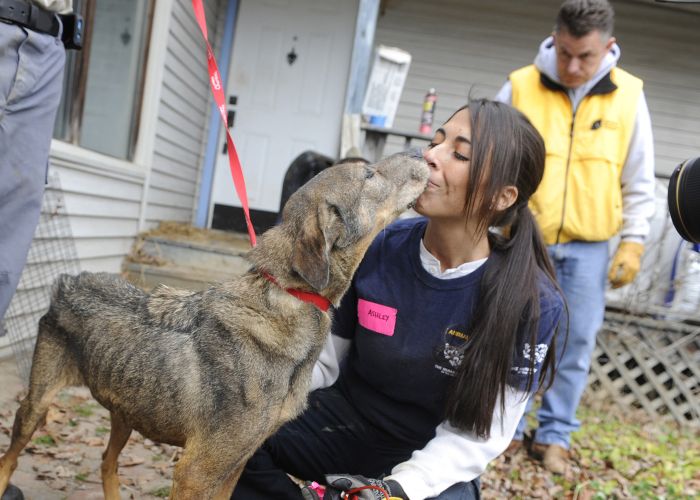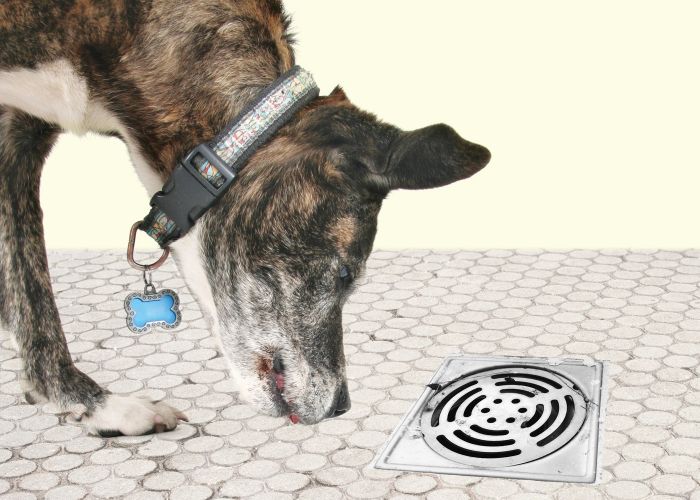Sharing stories, saving lives
Raising funds and finding homes to help special-needs pets

When Sheila arrived at the Nevada Humane Society (NHS) shelter, she more closely resembled a soiled mop than a dog. In addition to a matted coat, she had decaying teeth, an infected eye and a broken jaw that had healed on its own. Our veterinarian and dog care manager debated what was best for Sheila, given her age and poor condition. Sheila let her opinion be known—she loved everyone she met and ate with gusto. Her blood work results were promising, so she received her urgently needed dental surgery and other treatment. She recovered quickly and seemed thrilled with everyone and everything.
We took Sheila’s story to the public to ask for help covering the cost of her veterinary care. She was on the local TV news, social media, in the local paper, and we told our supporters about her in an email blast, each time asking for donations toward her care. The donations poured in. Sheila’s care cost $2,500, but the kind people of the community donated over $10,000 to help her and ultimately other sick or injured animals arriving at the shelter. Sheila also accumulated a long list of people eager to adopt her.
Those of us who work in animal welfare are lucky to have an opportunity to save lives every day. It is an opportunity that most people encounter only rarely. We can share that great feeling of being a lifesaver, a hero, with our supporters by inviting them to help us save animals who need care beyond the usual.
At NHS, we often asked people to help with donations for special-needs pets and discovered that, rather than overtaxing donors, it engaged them more fully in our work. Each animal brought new supporters to the cause. Each down-on-their-luck dog or cat we highlighted ended up saving many others who were just as worthy but might not have had a dramatic tale.
Here are some tips for making stories work for your own organization.

Keep an Eye Out for Compelling Tales
From admissions personnel to caregivers and clinic workers, your staff should be on the lookout for animals with special stories or particular hardships. When they encounter an animal who may have a story worth sharing, they need to let a designated staff member know, and this person must follow up immediately, getting photos and gathering information.
For a story to be effective at encouraging donations, it needs to engage emotions. Fundraising experts tell us that people respond more strongly to an appeal for an individual animal than an appeal to help many. Perhaps they can relate best to one individual or perhaps helping the many is overwhelming, but whatever the reason, this “power of one” seems to connect with audiences. So share an individual cat’s or dog’s experience—what happened to them and what is needed to give them a bright future (including the treatment required, estimated cost of care and a reminder that the pet will need a new home).
Keep in mind that you don’t want to limit stories about your shelter’s animals to the hardship cases. Tales about the cat who high-fives every visitor, the unusual-looking dachshund-dalmatian mix or the two animals who share a special bond may not generate a lot in donations, but they will raise awareness of your organization’s good work and remind potential adopters that you have wonderful, healthy animals waiting for new homes.
Getting the Story Out
Because most people are visually oriented, photos are an essential part of telling the story. Be sure to take plenty of during- and after-treatment photos to share (but nothing too graphic, please! Graphic images can cause sensitive animal lovers to turn away rather than donate).
While social media and your organization’s email list are important in getting the word out, the news media are critical to reaching new people. The folks who work for your local newspaper, TV and radio stations are always on the lookout for heartwarming stories. Call or email your media contacts with news tips, and send them your photos. Invite reporters to come meet the animal and get video or photos to support their stories. Whenever you are interviewed by a reporter, clearly ask people to donate to your special fund to help sick or injured animals.
Thanking Donors
In addition to the initial prompt thank you, send a special follow-up thank-you note to each donor, including a color photo of the dog or cat printed in the letter. Letting donors know what their donation did for the animal is important in building an ongoing relationship. If you raise more than was needed for the specific animal (which could easily happen), include that in the letter, too.

One NHS puppy named Bali had a congenital heart defect and needed surgery to survive. A local specialty clinic offered a discounted rate on the diagnostics and surgery, and we asked the public to help. Donors contributed over $20,000, far more than double the actual costs. Here is an excerpt from the thank-you letter we sent to donors:
We received an outpouring of generosity for Bali that exceeded our expectations. Once we have paid the bills for her care, we expect to have funds left over. We would like to use remaining funds to help other dogs and cats in critical need of veterinary care. We understand that this may not be what you had in mind and honoring your wishes is very important to us. We can provide a refund of your donation OR can have your gift allocated in a different way upon your request.
We’ve never had anyone ask for their donation back in such situations.
The funds raised by dogs like Sheila and Bali, or by cats like Trapper John (who was caught in a leghold trap) or Diva (who had burned paws), helped countless other animals in need of lifesaving care who had less engaging stories. Best of all, the publicity also generated lists of people eager to adopt these and other special-needs pets.
Other strategies that work to save and place special-needs pets:
- Plan for veterinary equipment needs: Create a clinic wish list. Supporters are often very happy to help purchase equipment for a clinic that will save lives many times over. Work with your veterinarian to create a list of what’s most needed.
- Get help for pets with chronic medical conditions: Model a program after the Richmond SPCA’s Angel Pets program, where designated dogs and cats with manageable health conditions are adopted by people who get a good deal on care and prescriptions at reduced costs through the shelter’s clinic.
- Figure out how to promote pets who don’t “sell” themselves: This describes some of the pets many shelter staff end up taking home! But there are other people out there with a soft spot for the tough-to-win-over Chihuahuas or feisty cats. And why not? After all, there is something special about winning the affection of a pet who does not love everyone he lays eyes on. Instead of downplaying the issue, ask: “Who can love this lady with an attitude?” You will find that the right person is out there just waiting to be asked.
So share these stories, and you’ll reap the benefits of increased community engagement—with lifesaving results.







